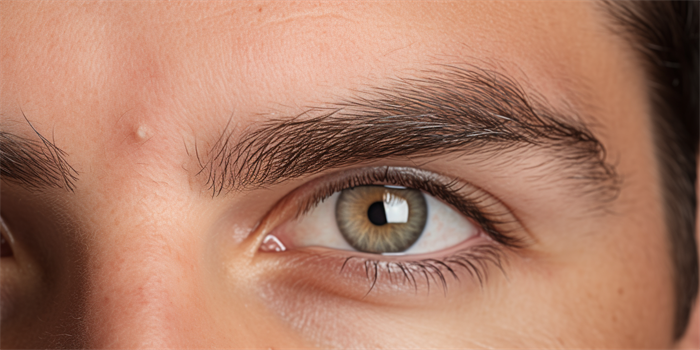Are you tired of spending hours every day trying to fill in your sparse eyebrows? Do you long for fuller and more defined brows that frame your face? Say goodbye to sparse brows and hello to the world of microblading pigments that deliver amazing and long-lasting results. In this article, we will explore eight key aspects of microblading pigments that will leave you excited to try this revolutionary technique.

The Basics of Microblading
Microblading is a semi-permanent cosmetic tattooing technique used to enhance the eyebrows. It involves manually depositing pigments into the skin using fine, sterile needles. Unlike traditional tattooing, microblading creates natural-looking hair strokes that mimic the appearance of real eyebrows. The pigments used in microblading play a crucial role in achieving realistic and fuller results.
1. The Importance of Pigment Selection
Choosing the right pigments is essential for achieving natural-looking results. Pigments should be specially formulated for microblading, ensuring they are safe, hypoallergenic, and fade-resistant. High-quality pigments offer a wide range of colors that can be blended to match the client's natural eyebrow hair color and skin tone. These pigments also need to be long-lasting, ensuring that the microbladed eyebrows retain their shape and color for an extended period.
2. Color Matching and Customization
Microblading pigments come in a variety of shades to match different hair colors and skin tones. Skilled microblading technicians can analyze a client's existing eyebrow color and create a customized pigment blend that perfectly matches their natural appearance. This level of customization ensures that the results are realistic and complimentary to the client's overall facial features.
3. Pigment Depth and Brow Shape
Microblading pigments can be applied at varying depths to create different effects and shapes. By adjusting the depth of pigment application, microblading technicians can achieve natural-looking hair strokes that blend seamlessly with the client's natural eyebrow hair. Additionally, the pigments can be strategically placed to enhance specific areas of the brow, such as filling in gaps or extending the tail for a more lifted appearance.
4. Retention and Fade Resistance
One of the key benefits of microblading is its long-lasting results. The pigments used need to have excellent retention properties and resist fading over time. High-quality microblading pigments are formulated to withstand the natural exfoliation process of the skin. They are designed to fade gradually, remaining visible for an average of 1 to 3 years before a touch-up is required. The longevity of the pigments ensures that clients can enjoy fuller brows without the daily hassle of applying brow makeup.
The Process and Aftercare
5. Microblading Procedure and Pain
The microblading procedure typically involves multiple steps, including consultation, design, numbing, and the actual microblading process. Skilled technicians meticulously measure and shape the eyebrows, ensuring a symmetrical and flattering result. Numbing creams or gels are applied to minimize any discomfort during the procedure. It is common for clients to experience mild discomfort or slight sensitivity, but the pain is generally well-tolerated.
6. Healing and Aftercare
After the microblading procedure, it is essential to follow proper aftercare instructions to ensure optimal healing and pigment retention. Clients are advised to keep the eyebrows dry and avoid vigorous activities that may cause sweating for a few days. Applying a recommended aftercare ointment or cream helps soothe the skin and promote healing. It is important to avoid scratching or picking at the treated area to prevent scarring or premature pigment loss.
7. Touch-ups and Maintenance
Microblading is a semi-permanent procedure, and periodic touch-ups are necessary to maintain the desired results. The frequency of touch-ups varies depending on factors such as the individual's skin type, lifestyle, and personal preference. On average, clients may require a touch-up every 12 to 18 months to refresh the color and shape of the microbladed eyebrows. These touch-up sessions also allow for any adjustments or enhancements to be made.
8. Cost and Considerations
The cost of microblading can vary depending on various factors such as the location, reputation of the technician or salon, and additional services offered. On average, the cost of a microblading session can range from $400 to $800, including the initial procedure and one touch-up session. While the initial cost may be higher than other eyebrow enhancement methods, the long-lasting results and saved time and effort on daily makeup application make it a worthwhile investment.
FAQs (Frequently Asked Questions)
Q: How long does the microblading procedure take?
A: The entire microblading process, including consultation and the actual procedure, typically takes around 2 to 3 hours.
Q: Is microblading suitable for everyone?
A: Microblading is generally safe for most individuals, but certain medical conditions and skin conditions may make someone ineligible for the procedure. It is essential to consult with a microblading professional to determine if it is suitable for you.
Q: Can I still shape or groom my microbladed eyebrows?
A: While microblading creates a defined shape, you can still groom or shape your microbladed eyebrows. However, it is advisable to consult with a professional to avoid accidentally removing any microbladed hair strokes.
Q: Can the color of microbladed eyebrows be adjusted?
A: The color of microbladed eyebrows can be adjusted during touch-up sessions. If you wish to change the color or make any enhancements, discuss your preferences with your microblading technician.
Q: Is microblading a painful procedure?
A: Some clients may experience minor discomfort during the microblading procedure, but it is generally well-tolerated. Numbing creams or gels are typically applied to minimize any pain.
In conclusion, microblading pigments offer a groundbreaking solution for achieving fuller and more defined eyebrows. From the importance of pigment selection to aftercare and maintenance, every aspect of the process plays a crucial role in delivering natural-looking and long-lasting results. With proper research and guidance from a skilled microblading technician, you can say goodbye to sparse brows and embrace the beauty of microbladed eyebrows.




